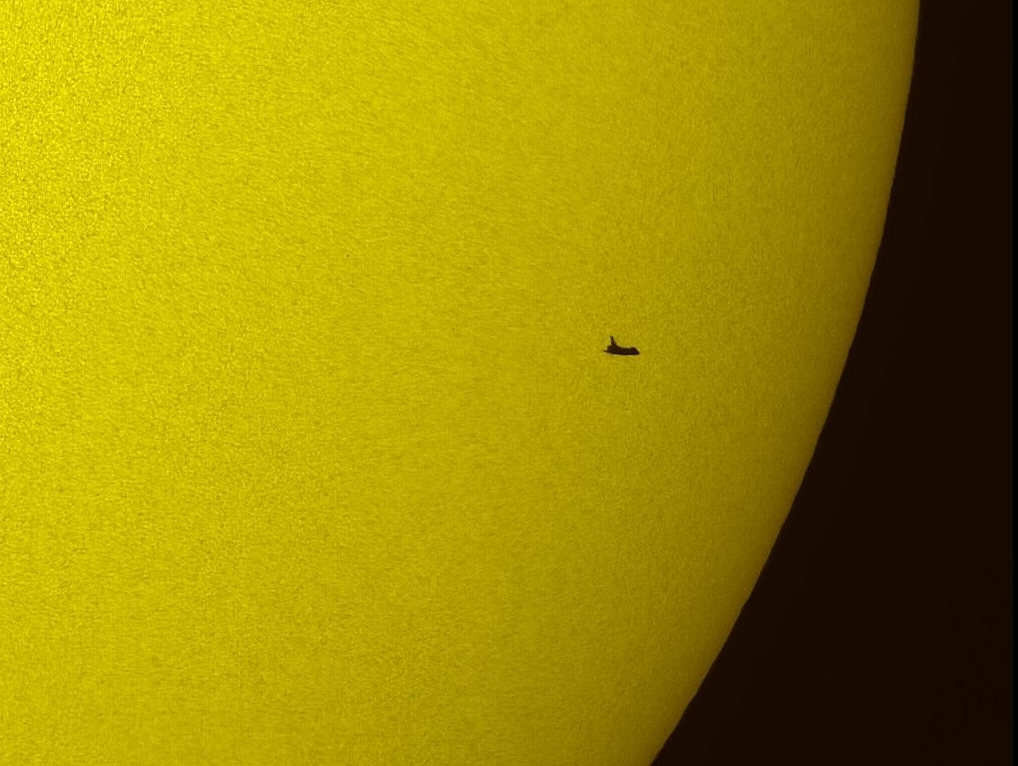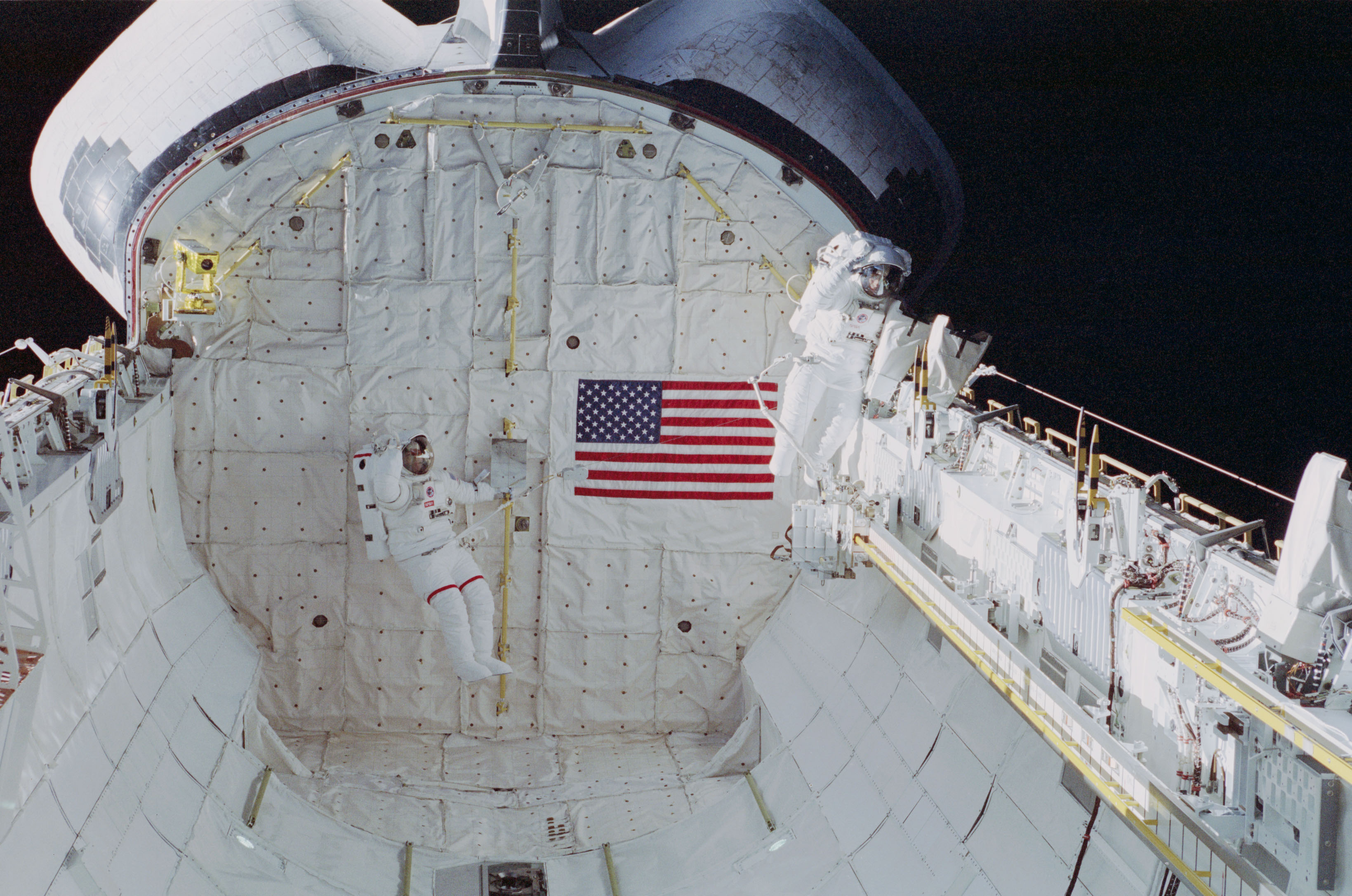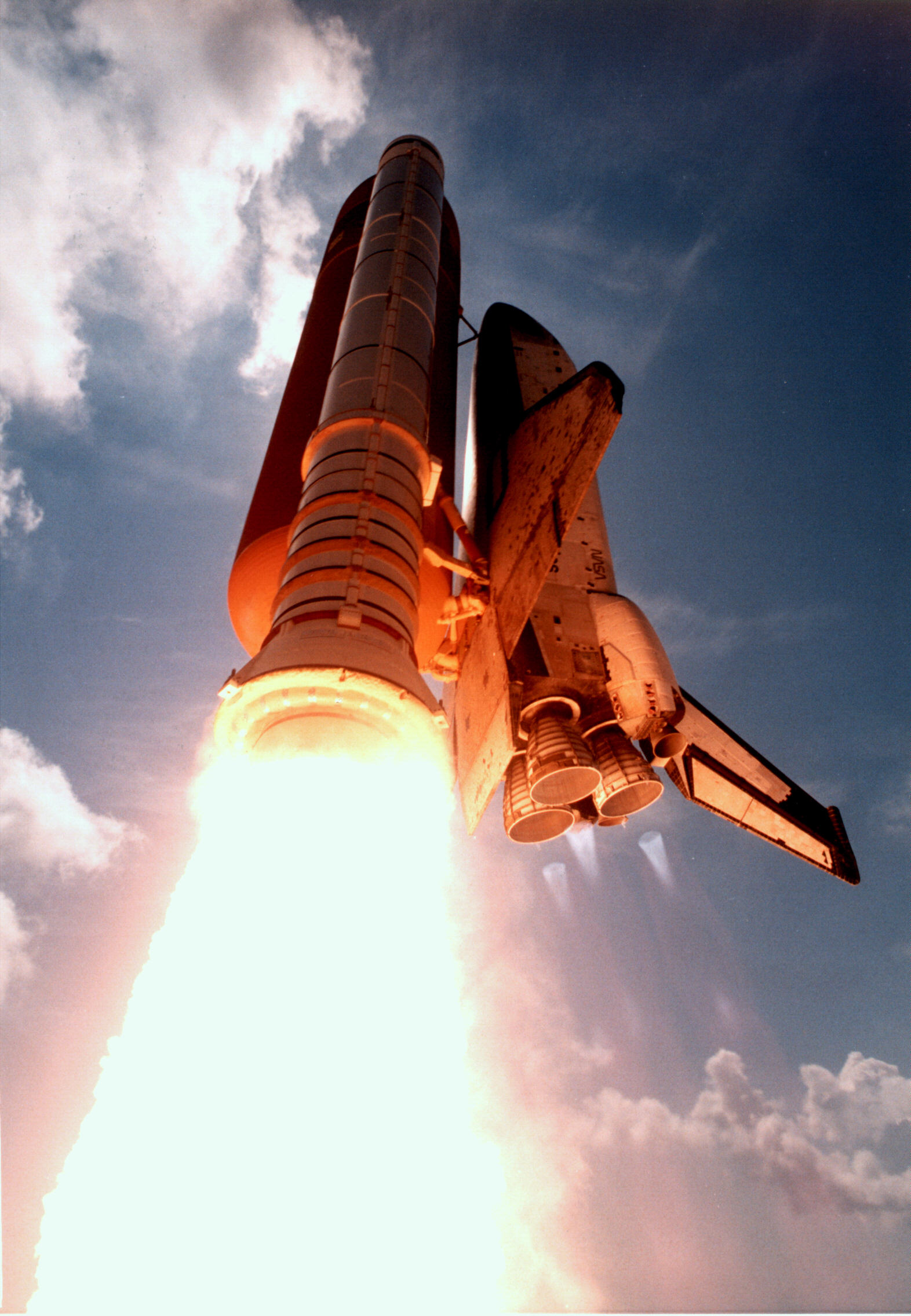|
STS-79
STS-79 was the 17th flight of Space Shuttle ''Atlantis'', and the 79th mission of the Space Shuttle program. The flight saw ''Atlantis'' dock with the Russian space station Mir to deliver equipment, supplies and relief personnel. A variety of scientific experiments were also conducted aboard ''Atlantis'' by her crew. It was the first shuttle mission to rendezvous with a fully assembled Mir, and the fourth rendezvous of a shuttle to the space station. Crew Mission highlights STS-79 was the first shuttle mission to a fully completed Mir space station, following the arrival of its Priroda module. ''Atlantis'' carried the Orbiter Docking System. This spaceflight was highlighted by the collection of American astronaut Shannon Lucid after 188 days in space, the first American crewmember exchange aboard the Russian Space Station Mir, and the fourth Shuttle-Mir docking. Lucid's long-duration spaceflight set a new American record, as well as worldwide spaceflight record for a woman as ... [...More Info...] [...Related Items...] OR: [Wikipedia] [Google] [Baidu] |
Space Shuttle Atlantis
Space Shuttle ''Atlantis'' (Orbiter Vehicle designation: OV‑104) is a Space Shuttle orbiter vehicle which belongs to NASA, the spaceflight and space exploration agency of the United States. ''Atlantis'' was manufactured by the Rockwell International company in Southern California and was delivered to the Kennedy Space Center in Eastern Florida in April 1985. ''Atlantis'' is also the fourth operational and the second-to-last Space Shuttle built. Its maiden flight was STS-51-J made from October 3 to 7, 1985. ''Atlantis'' embarked on its 33rd and final mission, also the final mission of a space shuttle, STS-135, on July 8, 2011. STS-134 by ''Endeavour'' was expected to be the final flight before STS-135 was authorized in October 2010. STS-135 took advantage of the processing for the STS-335 Launch on Need mission that would have been necessary if STS-134's crew became stranded in orbit. ''Atlantis'' landed for the final time at the Kennedy Space Center on July 21, 2011. ... [...More Info...] [...Related Items...] OR: [Wikipedia] [Google] [Baidu] |
Jay Apt
Jerome "Jay" Apt III, Ph.D. (born April 28, 1949 in Massachusetts) is an American astronaut and professor at Carnegie Mellon University. Before he became an astronaut, Apt was a physicist who worked on the Pioneer Venus 1978 space probe project, and used visible light and infrared techniques to study the planets and moons of the solar system from ground-based observatories. Biography Apt graduated from Shady Side Academy in Pittsburgh, Pennsylvania in 1967.Spacefacts Biography of Jerome Apt ''Spacefacts''. Retrieved July 18, 2011. He went on to attend , earning a |
Jerome Apt
Jerome "Jay" Apt III, Ph.D. (born April 28, 1949 in Massachusetts) is an American astronaut and professor at Carnegie Mellon University. Before he became an astronaut, Apt was a physicist who worked on the Pioneer Venus 1978 space probe project, and used visible light and infrared techniques to study the planets and moons of the solar system from ground-based observatories. Biography Apt graduated from Shady Side Academy in Pittsburgh, Pennsylvania in 1967.Spacefacts Biography of Jerome Apt ''Spacefacts''. Retrieved July 18, 2011. He went on to attend , earning a [...More Info...] [...Related Items...] OR: [Wikipedia] [Google] [Baidu] |
Space Station Mir
''Mir'' (russian: Мир, ; ) was a space station that operated in low Earth orbit from 1986 to 2001, operated by the Soviet Union and later by Russia. ''Mir'' was the first modular space station and was assembled in orbit from 1986 to 1996. It had a greater mass than any previous spacecraft. At the time it was the largest artificial satellite in orbit, succeeded by the International Space Station (ISS) after ''Mir'''s orbital decay, orbit decayed. The station served as a microgravity research laboratory in which crews conducted experiments in biology, human biology, physics, astronomy, meteorology, and spacecraft systems with a goal of developing technologies required for permanent occupation of Outer space, space. ''Mir'' was the first continuously inhabited long-term research station in orbit and held the record for the longest continuous human presence in space at 3,644 days, until it was surpassed by the ISS on 23 October 2010. It holds the record for the longes ... [...More Info...] [...Related Items...] OR: [Wikipedia] [Google] [Baidu] |
Mir EO-22
''Mir'' (russian: Мир, ; ) was a space station that operated in low Earth orbit from 1986 to 2001, operated by the Soviet Union and later by Russia. ''Mir'' was the first modular space station and was assembled in orbit from 1986 to 1996. It had a greater mass than any previous spacecraft. At the time it was the largest artificial satellite in orbit, succeeded by the International Space Station (ISS) after ''Mir'''s orbit decayed. The station served as a microgravity research laboratory in which crews conducted experiments in biology, human biology, physics, astronomy, meteorology, and spacecraft systems with a goal of developing technologies required for permanent occupation of space. ''Mir'' was the first continuously inhabited long-term research station in orbit and held the record for the longest continuous human presence in space at 3,644 days, until it was surpassed by the ISS on 23 October 2010. It holds the record for the longest single human spaceflight, ... [...More Info...] [...Related Items...] OR: [Wikipedia] [Google] [Baidu] |
Mir Docking Module
The Stykovochnyy Otsek (russian: стыковочный отсек, en, Docking compartment), GRAU index 316GK, otherwise known as the ''Mir'' docking module or SO, was the sixth module of the Russian space station ''Mir'', launched in November 1995 aboard the . The module, built by S.P. Korolev Rocket and Space Corporation Energia, RKK Energia, was designed to help simplify space shuttle dockings to ''Mir'' during the Shuttle-Mir Program, Shuttle-''Mir'' programme, preventing the need for the periodic relocation of the ''Kristall'' module necessary for dockings prior to the compartment's arrival. The module was also used to transport two new photovoltaic arrays to the station, as a mounting point for external experiments, and as a storage module when not in use for dockings. Development The docking module originated in the 1992 design version of the cancelled Mir-2, ''Mir''-2 space station, which featured a combined docking compartment and airlock to facilitate docking miss ... [...More Info...] [...Related Items...] OR: [Wikipedia] [Google] [Baidu] |
STS-78
STS-78 was the fifth dedicated Life and Microgravity Spacelab mission for the Space Shuttle program, flown partly in preparation for the International Space Station project. The mission used the Space Shuttle ''Columbia'', which lifted off successfully from Kennedy Space Center's Launch Pad 39B on June 20, 1996. This marked the 78th flight of the Space Shuttle and 20th mission for ''Columbia''. Crew Backup crew Mission objectives * Research into the effects of long – duration spaceflight on human physiology in preparation for flights on the International Space Station. * 22 life science and microgravity experiments using the Orbiter's pressurised Life & Microgravity Spacelab module (LM2). * Tests into the use of the Orbiter's Reaction Control System jets to raise the altitude of orbiting satellites. Mission highlights During the 16-day, 21-hour mission, the crew of ''Columbia'' assisted in the preparations for the International Space Station by studying the effects of ... [...More Info...] [...Related Items...] OR: [Wikipedia] [Google] [Baidu] |
STS-80
STS-80 was a Space Shuttle mission flown by Space Shuttle ''Columbia''. The launch was originally scheduled for 31 October 1996, but was delayed to 19 November for several reasons. Likewise, the landing, which was originally scheduled for 5 December, was pushed back to 7 December after bad weather prevented landing for two days. It was the longest Shuttle mission ever flown at 17 days, 15 hours, and 53 minutes. Although two spacewalks were planned for the mission, they were both canceled after problems with the airlock hatch prevented astronauts Tom Jones and Tammy Jernigan from exiting the orbiter. Crew Crew seating arrangements *During landing, Musgrave remained on the flight deck in order to film the spacecraft's reentry through the overhead windows. Mission highlights * The mission deployed two satellites and successfully recovered them after they had performed their tasks. * Orbiting and Retrievable Far and Extreme Ultraviolet Spectrometer-Shuttle Pallet Satellite I ... [...More Info...] [...Related Items...] OR: [Wikipedia] [Google] [Baidu] |
Priroda
The Priroda (russian: Природа; en, Nature) (TsM-I, 77KSI, 11F77I) module was the seventh and final module of the Mir Space Station. Its primary purpose was to conduct Earth resource experiments through remote sensing and to develop and verify remote sensing methods. The control system of Priroda was developed by the Khartron (Kharkov, Ukraine). Description Priroda was originally designed to carry a deployable solar array. However, due to delays, and the fact that solar arrays were planned for other parts of Mir, a solar array was not included in the launch configuration. Instead, during free flight, Priroda was powered by two redundant sets of batteries totaling 168. Priroda had an unpressurized instrument compartment and a habitable instrument/payload compartment. The unpressurized compartment contained propulsion system components, EVA handrails, and scientific equipment. The instrument/payload compartment was divided into two sections: an outer instrument section ... [...More Info...] [...Related Items...] OR: [Wikipedia] [Google] [Baidu] |
STS-76
STS-76 was NASA's 76th Space Shuttle mission, and the 16th mission for ''Atlantis''. STS-76 launched on 22 March 1996 at 08:13:04 UTC from Kennedy Space Center, launch pad 39B. STS-76 lasted over 9 days, traveled about while orbiting Earth an estimated 145 times, and landing at 13:28:57 UTC on 31 March 1996 at Edwards Air Force Base, runway 22. The flight was the third Shuttle mission to dock with the Russian Space Station Mir, as part of the Shuttle–Mir program, carrying astronaut Shannon Lucid to the orbital laboratory to replace NASA astronaut Norman Thagard. STS-76 also carried a SPACEHAB single module along with Lucid, and on flight day 6, Linda M. Godwin and Michael R. Clifford performed the first U.S. spacewalk around two docked spacecraft since the last Skylab mission in 1974. Crew Spacewalks * '' Godwin and Clifford '' – EVA 1 * EVA 1 Start: 27 March 1996 – 06:34 UTC * EVA 1 End: 27 March 1996 – 12:36 UTC * Duration: 6 hours, 02 minutes Miss ... [...More Info...] [...Related Items...] OR: [Wikipedia] [Google] [Baidu] |
Mobile Launcher Platform
A mobile launcher platform (MLP), also known as mobile launch platform, is a structure used to support a large multistage space vehicle which is assembled (stacked) vertically in an integration facility (e.g. the Vehicle Assembly Building) and then transported by a crawler-transporter (CT) to a launch pad. This becomes the support structure for launch. Alternatives to this method include horizontal assembly and transport to the pad, as used by Russia; and assembling the vehicle vertically on the launch pad, as the United States used for smaller launch vehicles. The use of mobile launcher platform is a part of the Integrate-Transfer-Launch (ITL) system, which involves vertical assembly, transport, and launch of rockets. The concept was first implemented in the 1960s for the United States Air Force's Titan III rocket, and it was later used by NASA for their Saturn V rocket vehicle. Kennedy Space Center From 1967 to 2011, three platforms were used at the LC-39 to support NASA ... [...More Info...] [...Related Items...] OR: [Wikipedia] [Google] [Baidu] |
List Of Human Spaceflights
This is a list of all human spaceflights throughout history. Beginning in 1961 with the flight of Yuri Gagarin aboard Vostok 1, human spaceflight occurs when a human crew flies a spacecraft into outer space. Human spaceflight is distinguished from spaceflight generally, which entails both crewed and uncrewed spacecraft. There are two definitions of spaceflight. The Fédération Aéronautique Internationale (FAI), an international record-keeping body, defines the boundary between Earth's atmosphere and outer space at above sea level. This boundary is known as the Kármán line. Additionally, the United States awards astronaut wings to qualified personnel who pilot a spaceflight above an altitude of . As of the launch of Shenzhou 15 on 29 November 2022, there have been 367 human spaceflight launches. Two missions did not cross either the Kármán line or the U.S. definition of space and therefore do not qualify as spaceflights. These were the fatal STS-51-L ( Challe ... [...More Info...] [...Related Items...] OR: [Wikipedia] [Google] [Baidu] |






.jpg)
.jpg)